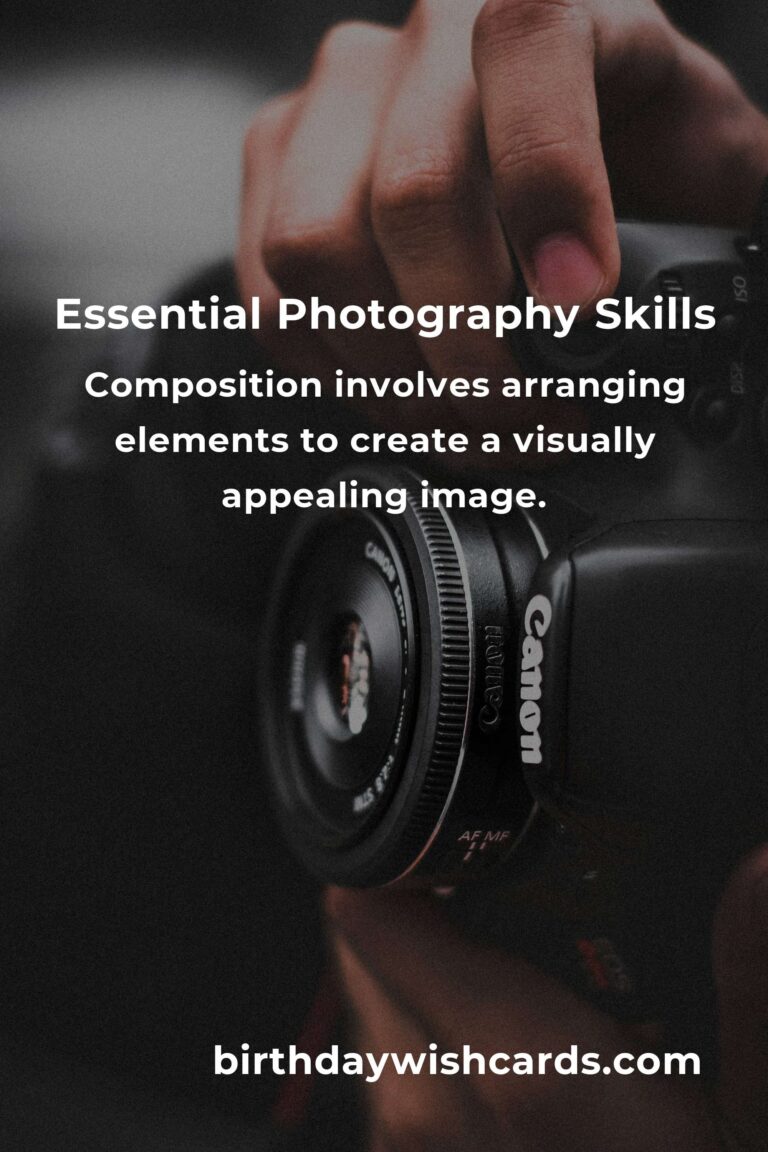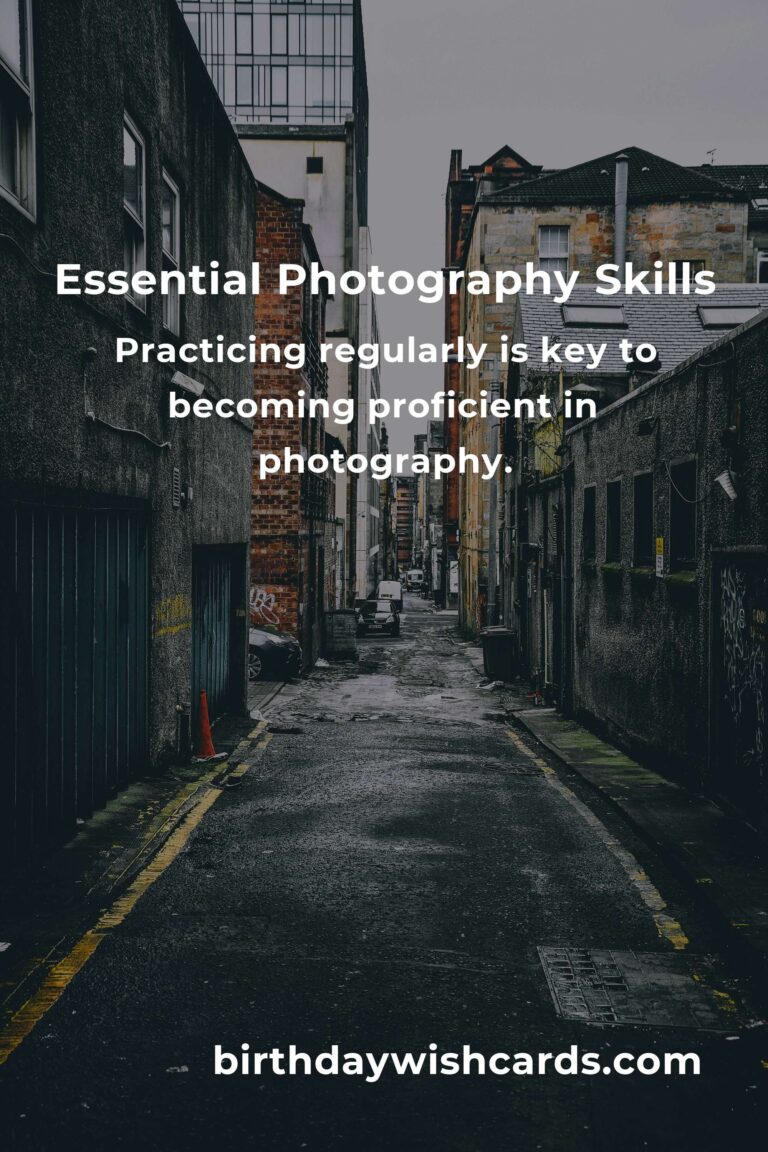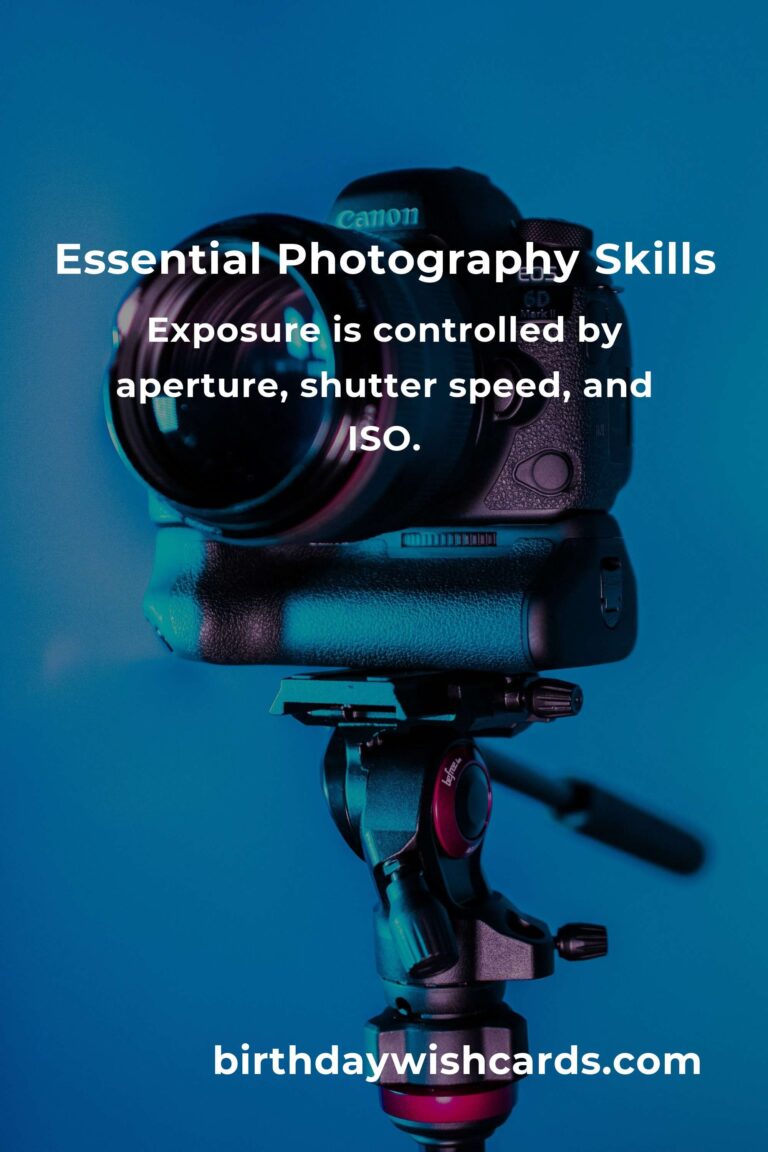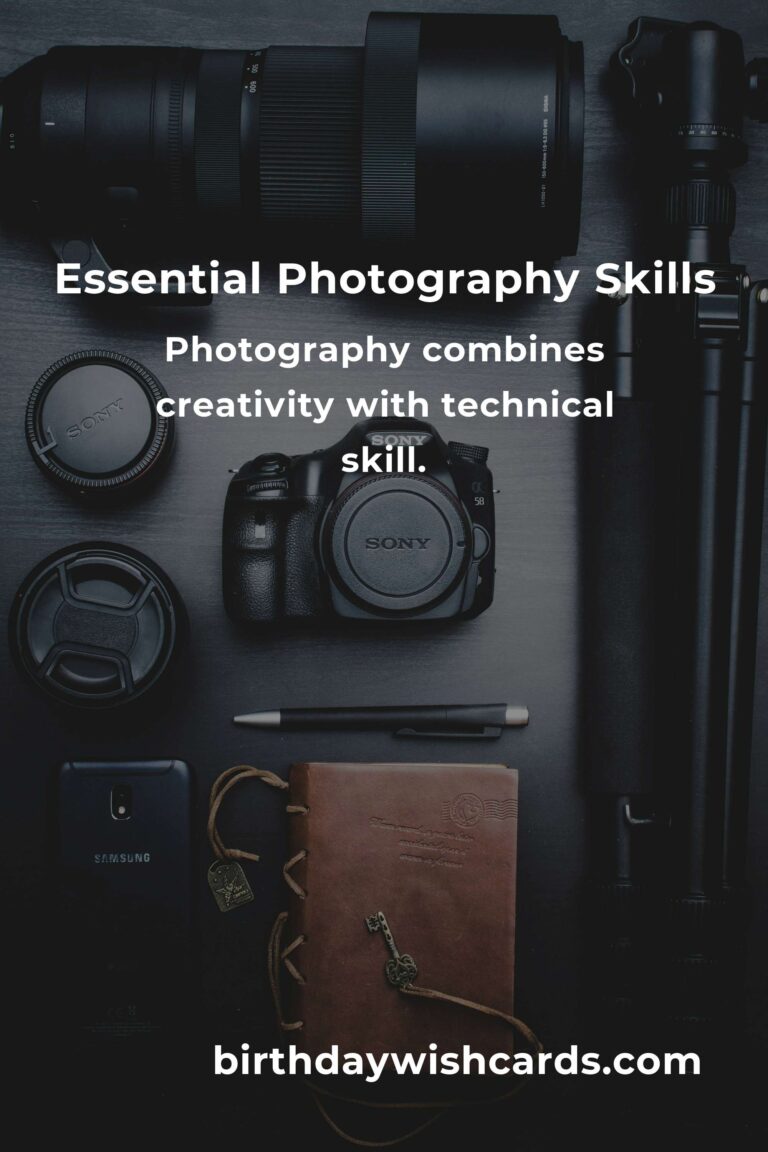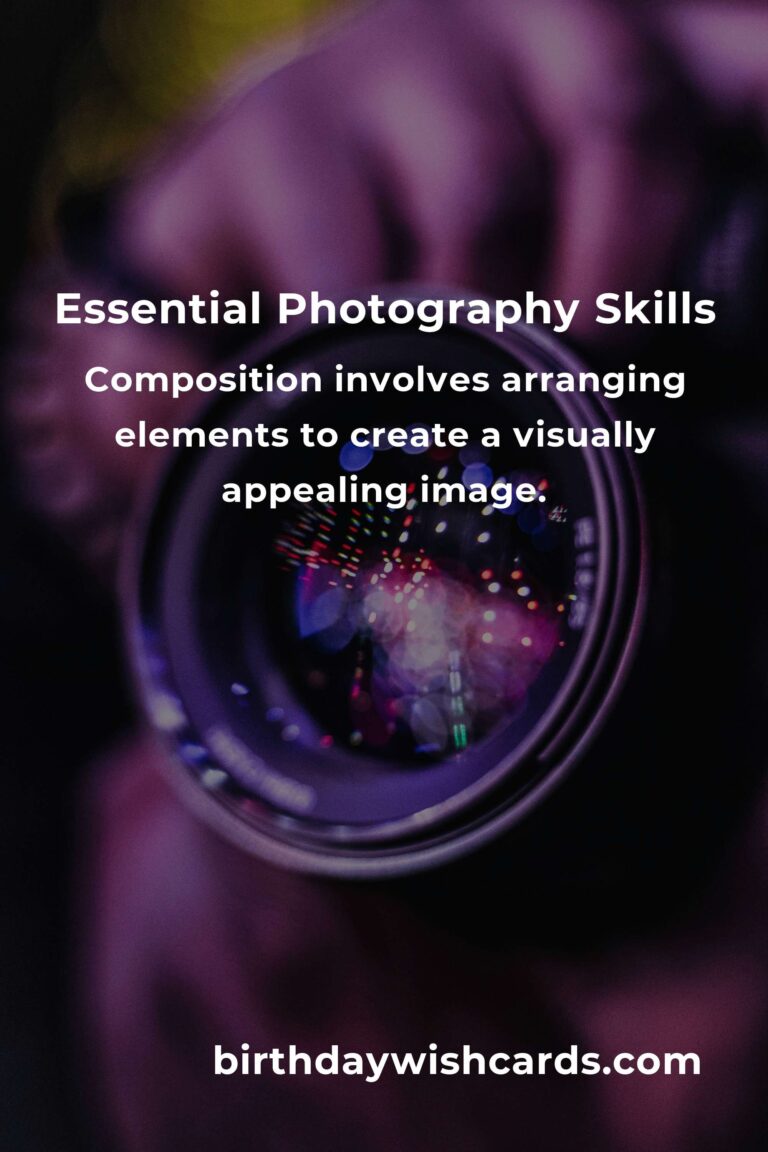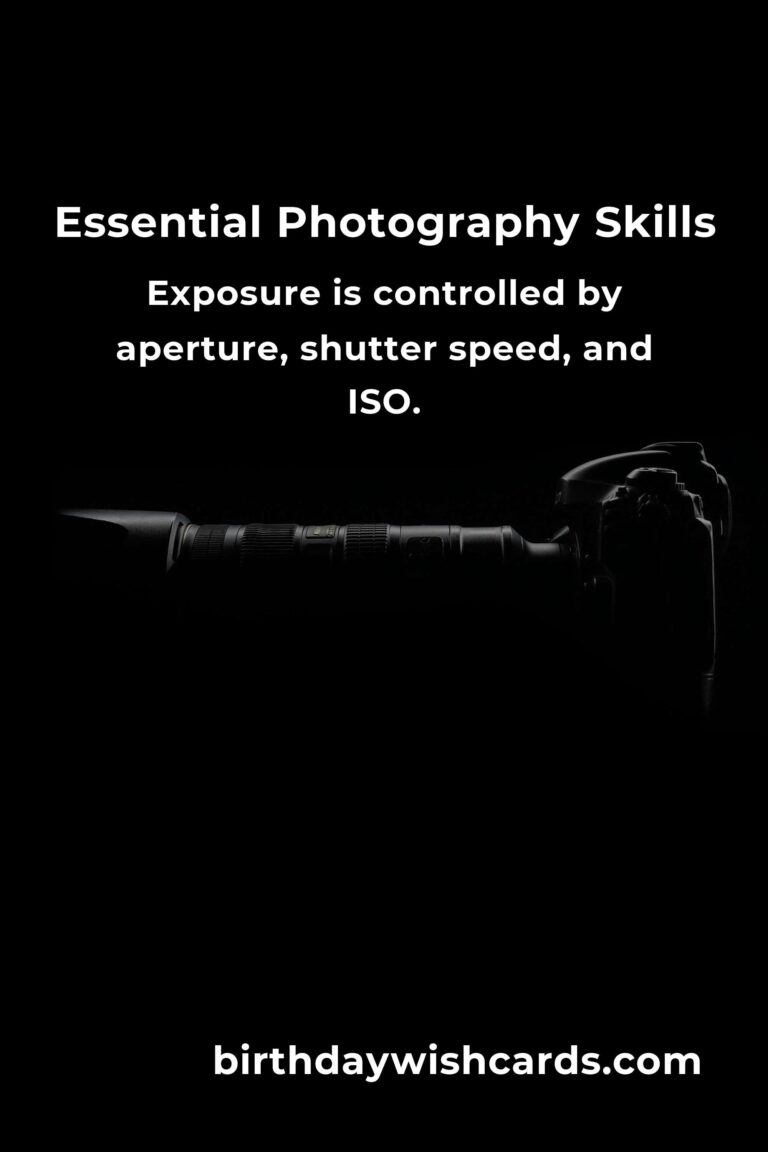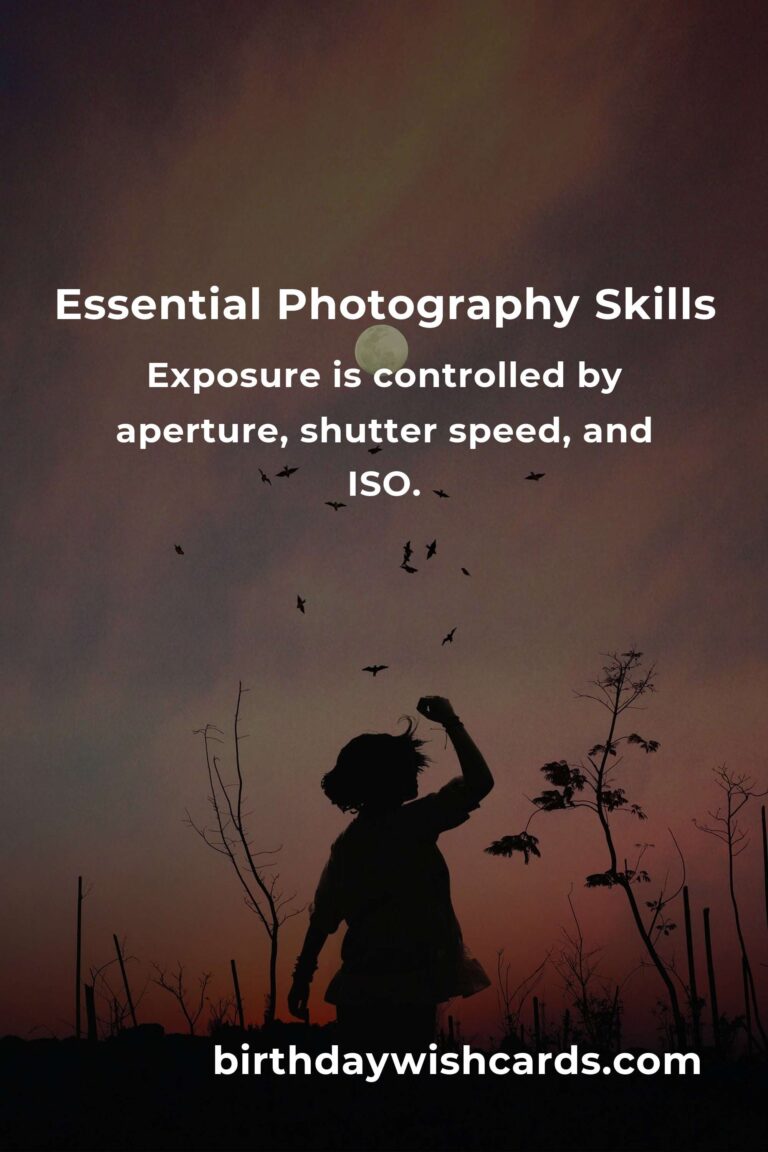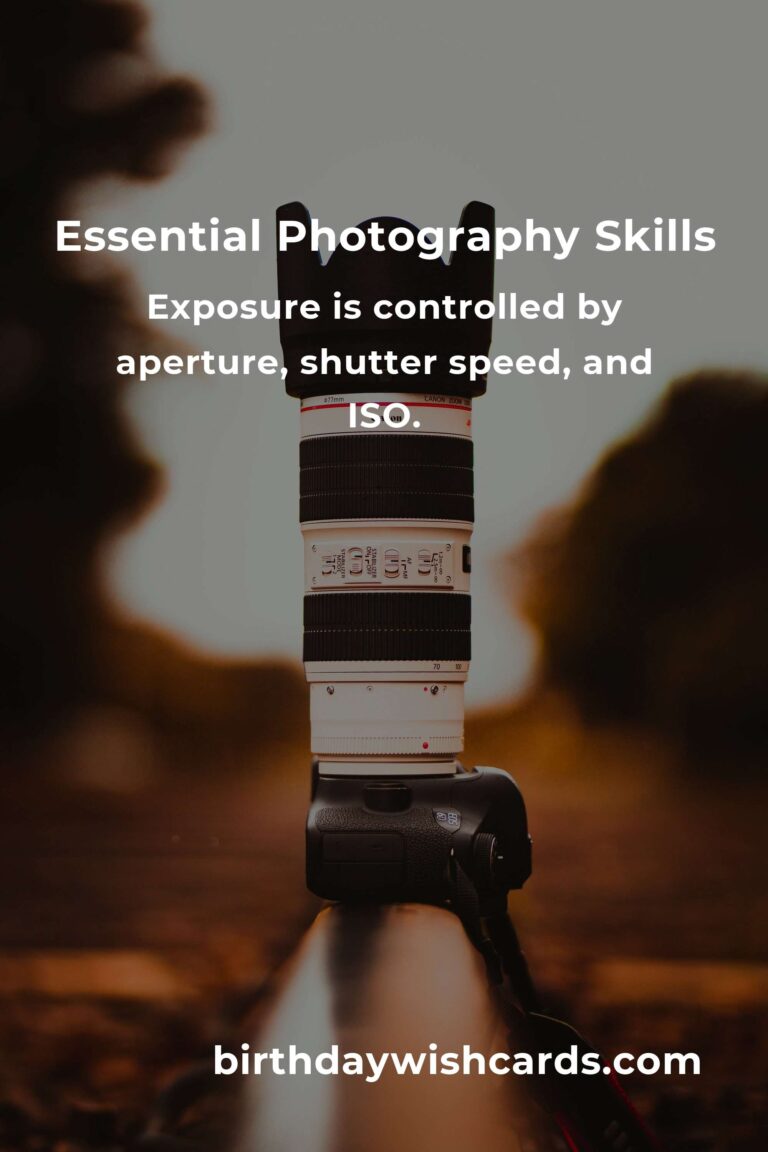
Photography is a captivating art form that combines creativity with technical skill. Whether you are a beginner or looking to refine your skills, understanding the fundamentals is crucial for capturing stunning images. This complete checklist will guide you through the essential elements of photography, ensuring you have a solid foundation to build upon.
1. Understanding Exposure
Exposure is the cornerstone of photography. It determines how light or dark your photos appear. Exposure is controlled by three fundamental settings: aperture, shutter speed, and ISO. Together, they form what is known as the ‘exposure triangle.’
Aperture: This refers to the size of the opening in your lens. A larger aperture (smaller f-number) lets in more light and creates a shallow depth of field, perfect for portraits. A smaller aperture (larger f-number) is ideal for landscapes, providing a wider depth of field.
Shutter Speed: This determines how long your camera’s shutter remains open. A fast shutter speed can freeze motion, while a slow shutter speed can create a sense of movement.
ISO: This measures the sensitivity of your camera’s sensor to light. A lower ISO is preferable in bright conditions, while a higher ISO is beneficial in low-light situations.
2. Mastering Composition
Composition in photography is about arranging elements within your frame to create a visually appealing image. The rule of thirds is a fundamental guideline that suggests dividing your image into a 3×3 grid and placing the subject along these lines or their intersections.
Other compositional techniques include leading lines, symmetry, and framing. Each technique can drastically alter the impact of your photograph, guiding the viewer’s eye to the most important parts of the scene.
3. Lighting Techniques
Lighting can make or break a photograph. Understanding natural light and how to work with artificial light sources is essential. The golden hour, which occurs shortly after sunrise or before sunset, provides soft, warm lighting that is ideal for many types of photography.
Experimenting with backlighting, side lighting, and using reflectors can add depth and interest to your images. Additionally, learning to use flash effectively can help in situations where natural light is insufficient.
4. Post-Processing Skills
Post-processing is the art of enhancing your photos after they have been taken. Software like Adobe Lightroom and Photoshop are powerful tools that allow you to adjust exposure, contrast, and color balance, among other things.
While it’s important not to rely too heavily on post-processing, understanding how to make subtle adjustments can significantly improve your final image.
5. Choosing the Right Equipment
Having the right equipment can enhance your photography experience. While a high-quality camera and lenses are advantageous, understanding how to use what you have effectively is more important than having the latest gear.
Investing in a good tripod, filters, and a camera bag can also be beneficial. However, remember that creativity and skill are not dependent on equipment alone.
6. Practicing Regularly
Photography is a skill that improves with practice. Regularly taking photos, experimenting with different styles, and learning from mistakes are key to becoming a proficient photographer.
Consider joining photography clubs or online communities where you can share your work and receive constructive feedback. Engaging with other photographers can inspire new ideas and concepts.
Conclusion
Mastering photography fundamentals is a journey that involves continuous learning and practice. By understanding exposure, composition, lighting, post-processing, and using the right equipment, you will be well on your way to capturing breathtaking images. Remember, the best way to improve is to keep shooting and exploring your creative vision.
Photography combines creativity with technical skill. Exposure is controlled by aperture, shutter speed, and ISO. Composition involves arranging elements to create a visually appealing image. Lighting is essential for capturing the right mood and depth in photos. Post-processing enhances photos after they have been taken. Practicing regularly is key to becoming proficient in photography.
#Photography #Exposure #Composition #Lighting #PostProcessing #CameraEquipment


